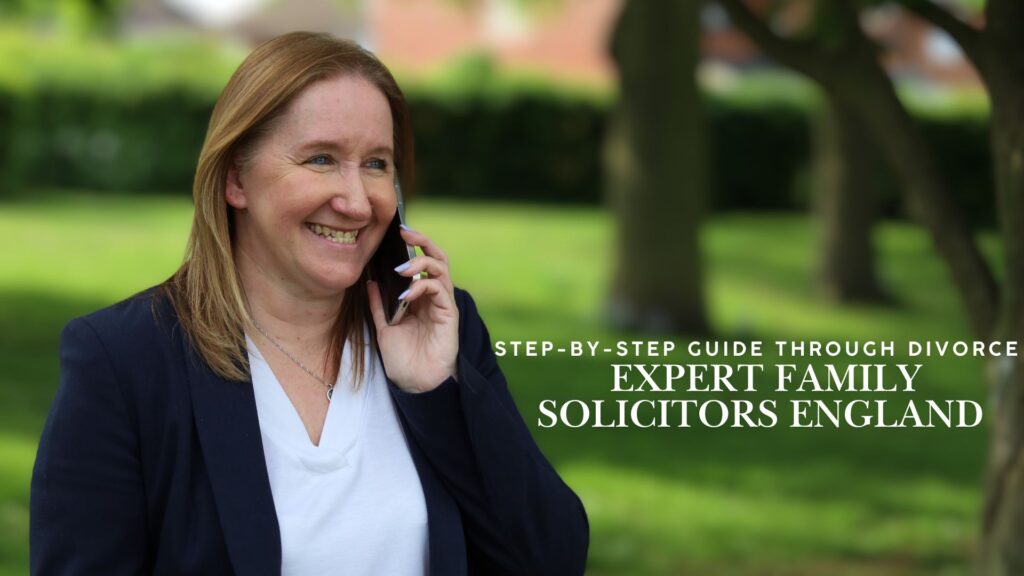Deciding to begin divorce proceedings is a significant and often emotional decision, but understanding the steps involved and knowing best practices can help make the process smoother. Taking the right approach from the start can help reduce stress, protect your rights, and set a foundation for a fair outcome. In this blog post, we’ll walk through how to initiate divorce proceedings and offer key best practices to help you navigate this challenging period effectively.
Step 1: Decide on the Grounds for Divorce
In the UK, you need a valid reason, or “grounds,” for divorce. Under recent reforms, the law now allows for a no-fault divorce, meaning that couples no longer need to provide a specific reason for ending the marriage beyond the acknowledgement that the marriage has irretrievably broken down.
The no-fault divorce option allows either or both spouses to file a divorce application without placing blame on the other person, which can help reduce conflict. This is often the first step and, with the support of a family law solicitor, you can determine if any other grounds may be appropriate.
Step 2: Submit the Divorce Application
Once you’ve decided to proceed, the next step is to file a divorce application (formerly known as a petition). You can do this either online through the government’s portal or with the help of a family law solicitor who can guide you through the process.
The application will require basic information, such as:
- Full names, addresses, and marriage details of both spouses
- Details on any children under the age of 18, if applicable
- A statement confirming the marriage has broken down irretrievably
If you are submitting a sole application, your spouse will receive a copy of the application. If you’re applying jointly, you will both receive a copy of the application once it has been filed.
Step 3: Acknowledge Service
Once the application has been filed, the next step is acknowledgment of service. If you submitted a sole application, your spouse will need to confirm receipt of the application and respond by filing an acknowledgment of service with the court. This step confirms that both parties are aware of and agree to the proceedings.
For a no-fault divorce, this part of the process is usually straightforward. However, if one spouse does not respond, there are alternative ways to move the case forward, which your solicitor can guide you through.
Step 4: Apply for the Conditional Order (Decree Nisi)
After the acknowledgment of service has been filed, you can apply for a Conditional Order (formerly known as Decree Nisi). This is a crucial step, as the Conditional Order is the court’s first official statement that the marriage qualifies for divorce.
The judge will review the case to ensure that all legal requirements have been met. If they agree, they will issue a certificate confirming that the Conditional Order has been granted, typically without a court hearing.
Step 5: Apply for the Final Order (Decree Absolute)
The final step is to apply for the Final Order (formerly known as Decree Absolute), which legally ends the marriage. You can do this six weeks after the Conditional Order is granted. Once the Final Order is issued, the divorce is finalised, and both parties are free to remarry if they choose.
Best Practices During Divorce Proceedings
While understanding the steps involved is essential, there are also best practices to consider that can make the process smoother and less stressful. These tips can help you navigate the proceedings and protect your interests.
Best Practice Tips for a Smooth Divorce Process
1. Seek Professional Legal Advice Early
One of the most important steps is to seek advice from a family law solicitor at the very start. A solicitor can help you understand your rights, navigate complex issues (like financial settlements or child arrangements), and avoid common mistakes. Legal guidance is especially valuable if your case involves significant assets, business interests, or child custody matters.
2. Consider Mediation for Dispute Resolution
If there are disagreements about finances, property, or child arrangements, consider using mediation. Mediation is a structured process where both spouses meet with a neutral third-party mediator to work through issues and reach mutually acceptable agreements.
Mediation can save time, reduce costs, and help avoid the stress of court proceedings. Many courts now require couples to attend a mediation information session before pursuing contested cases in court. Working collaboratively also often benefits any children involved, as it reduces the conflict they may witness.
3. Organise Your Financial Information
Divorce often involves complex financial considerations, such as dividing assets, property, pensions, and debts. Having your financial information organised from the outset can simplify the process and support fair negotiations. Key documents to prepare include:
- Bank statements
- Tax returns
- Mortgage information
- Pension details
- Property deeds or lease agreements
- Documents for investments or valuable assets
With this information in hand, you and your solicitor can make a strong case for a fair settlement. This organisation also helps if your case proceeds to financial disclosure, where both parties must provide a detailed account of their financial situations.
4. Focus on Child Arrangements and Co-Parenting
If you and your spouse have children, establishing clear, cooperative child arrangements is essential. Divorce can be particularly difficult for children, so prioritising their well-being is crucial.
Many parents use a Child Arrangement Order to formalise custody, visitation, and other parenting responsibilities. Additionally, agreeing on co-parenting principles early on can help provide stability for your children during a time of change. Working together to keep the children’s best interests at the forefront can also improve relations with your spouse and minimise conflict.
5. Take Care of Your Emotional Well-being
Divorce can be emotionally taxing, and prioritising your mental health can help you make more rational, balanced decisions. Lean on trusted friends and family, and consider counselling or support groups if needed. Emotional support will help you feel grounded and focused, ultimately benefiting you and your family during the process.
6. Communicate Clearly and Keep Records
Clear communication with your spouse, solicitor, and anyone involved in the process is essential. Keep copies of all documents, emails, and correspondence related to the divorce to ensure you have accurate records. Documenting communication can also prevent misunderstandings and protect you if disputes arise.
Why Work with a Family Law Solicitor?
Navigating the legal and emotional complexities of divorce can be challenging, but working with a family law solicitor can make the process significantly smoother. Here’s how a solicitor can help:
- Provide Expert Guidance
A family law solicitor can explain your rights, advise on your options, and guide you through each stage of the process. This expert knowledge is essential, especially if your case involves finances, property, or children. - Ensure Legal Compliance
Divorce involves strict legal requirements, from completing applications to adhering to deadlines. A solicitor ensures all documents are correctly filed, and procedures followed, which minimises the risk of delays or errors. - Negotiate Settlements
A solicitor can represent you in negotiations, whether for financial settlements or child arrangements, helping you achieve a fair outcome. This includes support for mediation or, if necessary, representation in court. - Provide Emotional Support
Beyond legal advice, a solicitor can be a source of support and guidance. Knowing you have someone experienced on your side can provide peace of mind, allowing you to focus on rebuilding your life.
Conclusion
Divorce is a life-changing decision, but with the right knowledge and support, it doesn’t have to be an overwhelming process. By understanding the steps involved, following best practices, and working with a family law solicitor, you can approach your divorce with confidence. Whether it’s protecting your assets, securing your child’s future, or simply moving forward, taking the right approach from the start can make all the difference.
At Geraldine Watson Family Law Solicitors, we’re here to provide compassionate, expert guidance to help you through each step of your divorce. Contact us today to learn more about how we can support you during this important time.
For more information and guidance on this topic, please contact Geraldine Watson Family Law.

